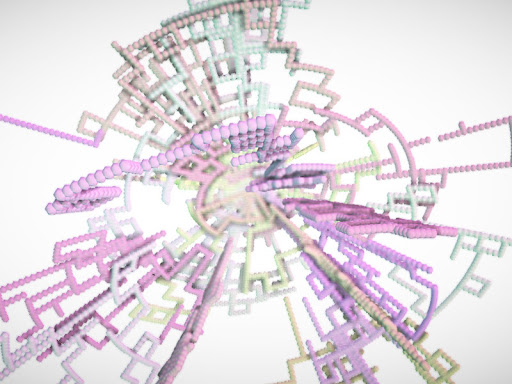The origin of mass in the universe is a profound topic that straddles the realms of physics and philosophy, encompassing fundamental questions about the very nature of reality. At its core, mass is not merely a measure of how much ‘stuff’ an object contains; rather, it is intrinsically tied to the framework of modern physics, which seeks to explain the universe’s intricate workings through theoretical constructs and empirical observations. To grapple with the origin of mass, one must traverse various theoretical landscapes, including particle physics, cosmology, and the enigmatic mechanisms of the Higgs field.
Mass, as a property of matter, emerges in several contexts. In Newtonian mechanics, mass serves as a measure of an object’s resistance to acceleration when a force is applied—a concept we typically refer to as inertial mass. However, this merely scratches the surface of its significance. Einstein’s formulation of mass in relation to energy, epitomized by the iconic equation E=mc², shows that mass and energy are interchangeable. This insight transforms our understanding of mass from a static quality to a dynamic entity, intricately woven into the fabric of spacetime.
To delve deeper, we must explore the field of particle physics, where the nature of mass is intrinsically linked to the Standard Model. This theoretical framework describes the fundamental particles that constitute the universe: quarks, leptons, and bosons, along with their interactions. Within this realm, the existence of force-carrier particles, such as photons and gluons, illustrates how the fundamental forces operate to bind matter together. Yet, the question of why particles have mass remains an open inquiry and leads us to the pivotal concept of the Higgs mechanism.
The Higgs mechanism posits an elegant solution to the question of mass. According to this theory, an omnipresent field known as the Higgs field permeates all space. When fundamental particles interact with this field, they acquire mass; the greater the interaction, the heavier the particle becomes. This interaction is mediated by the Higgs boson, a particle that was famously confirmed through experiments at the Large Hadron Collider in 2012. The discovery of the Higgs boson was a watershed moment in physics, validating decades of theoretical predictions and providing an empirical foundation for understanding how mass originates at the subatomic level.
In examining the implications of the Higgs field, one must consider the buoyant realm of cosmological evolution. The early universe—characterized by extreme temperatures and energies—existed in a state devoid of mass as we perceive it today. As the universe expanded and cooled, the Higgs field underwent a phase transition. This pivotal event allowed particles to begin acquiring mass. Consequently, structure formation in the universe was set into motion, leading to the aggregation of particles into atoms, stars, and eventually galaxies. Thus, the origin of mass is not merely a standalone phenomenon but a driving force behind the evolutionary narrative of the cosmos.
However, the journey into understanding mass does not conclude with the Higgs mechanism. Recent explorations into dark matter and dark energy unveil further layers of complexity. Approximately 85% of the matter in the universe is believed to be dark matter, a substance that interacts gravitationally but not electromagnetically, rendering it invisible to our current observational techniques. This enigmatic form of matter challenges our classical notions of mass, demonstrating that an incomplete grasp of mass could lead to a myopic understanding of the universe. Furthermore, the conundrum of dark energy, which is thought to be responsible for the accelerated expansion of the universe, adds yet another dimension to the discourse on mass and its origin.
As current research progresses, it becomes increasingly apparent that the quest to comprehend mass is inherently tied to more esoteric inquiries. The interplay between mass and quantum fields raises tantalizing questions about the nature of reality and the fundamental constituents of the universe. Discussions surrounding string theory, for instance, propose that particles are not point-like entities but rather one-dimensional ‘strings’ whose vibrational modes determine their mass and other properties. This perspective prompts a radical shift in thinking about the origin of mass, suggesting that its roots may lie in higher dimensions beyond our conventional three-dimensional experience.
Still, the most pressing question remains: what is the ultimate origin of mass? Theoretical physicists continue to strive for a unified theory that reconciles quantum mechanics with general relativity, potentially shedding light on previously uncharted territory. The quest is akin to looking for a Rosetta Stone that could decode the very essence of mass itself, intertwining our understanding of the universe’s myriad components.
In conclusion, understanding the origin of mass in the universe invokes a synthesis of principles across multiple domains of physics. The Higgs mechanism illustrates one of the most profound realizations—mass is not an inherent property of matter but a dynamic consequence of interactions within the Higgs field. Simultaneously, the enigma of dark matter and dark energy keeps researchers pursuing answers that may alter our understanding forever. Ultimately, as our knowledge expands and new theories emerge, the quest to unravel the origin of mass persists, promising to elevate our comprehension of the universe from mere observation to deeper, more philosophical insights about the fabric of reality itself.












